Who Is Karl
If you are looking for a short bio then click here.
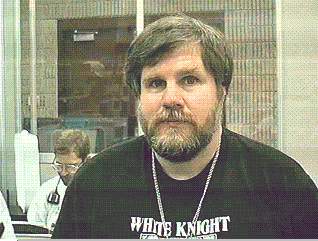 So, I bet the first thing you want to know is what I look like. The photo on the left is nearly a decade old, but I like it. The vicissitudes of Internet politics, life at startups, and life in general have left me with a bit more gray around the edges.
So, I bet the first thing you want to know is what I look like. The photo on the left is nearly a decade old, but I like it. The vicissitudes of Internet politics, life at startups, and life in general have left me with a bit more gray around the edges.
Some people have said "Karl is a crock".
And I’m here to say that they are right… sort of…
Yes! That that is me over there to the lower right.
I was understudy crocodile in a production of Peter Pan.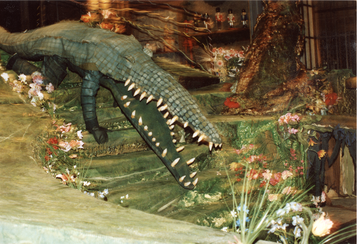
It is true that I hold some strong opinions. This website is full of materials that articulate and elaborate on those opinions so I won’t go into a lot of detail here except to say that I firmly believe that modern governance - political and of the internet - is in serious trouble unless we abandon the corrosive concept of stakeholderism and return to the principles of constrained government and separation of powers, as articulated by so many of the great thinkers of the 18th century.
There is one particular matter that I consider of key importance to the development of the internet:
The First Law of the Internet
Every person shall be free to use the Internet in any way that is privately beneficial without being publicly detrimental.
The burden of demonstrating public detriment shall be on those who wish to prevent the private use.
Such a demonstration shall require clear and convincing evidence of public detriment.
The public detriment must be of such degree and extent as to justify the suppression of the private activity.
My opinions about the internet are shaped to a great degree by my family history. My grandfather was a radio repairman; my father was a TV repairman; I am an internet repairman. I have great sympathy with the needs of those who have to keep technical devices and systems running. I recognize the value of a good tool kit. And I am not at all pleased with how few good tools are available to do internet diagnosis and repair, much less with the near absence of consideration in the internet architecture and in implementations for diagnosis and repair.
Footprints
Yes, I do have a past. I don’t remember it all, but here are some of the high (and low) points, in no particular order:
-
I am the Chief Technical Officer at InterWorking Labs, Inc. My business card gives my title as "Chief Instigator".
The company goal is to make the internet a more reliable place. We create tools to help implementers improve the quality of their products. I am also reviving some ideas that I had during the early 1990’s to provide tools to those who repair networks and to create an encompassing matrix that can enhance the usability of those tools. (Yes, I am being vague; it is intentional.)
-
I was the North American publicly elected member of the Board of Directors of ICANN, the Internet Corporation for Assigned Names and Numbers. The election, which was one of the first internet based public elections, was a success.
However, ICANN has abandoned elections; I am the only person who will ever hold that position.
Being on the board was quite an experience. There was lots of travel around the world, lots of board meetings at 5am, lots of discussion about matters that have absolutely nothing about the technical stability of the internet but everything about the protection of intellectual property and incumbent interests. It was sometimes fun, but often not, particularly as ICANN tried to obstruct me in the exercise of my duties. It became necessary for me to engage in legal actions, which I won, to force ICANN to cease its unlawful activities.
-
I was named a Henry C. Yuen Fellow of Law and Technology at the California Institute of Technology (CalTech) and Loyola Law School. When I received the award I presented a paper entitled Why Louis XIV Would Have Loved The Internet.
-
In 2002 I received the Norbert Wiener Award for Social and Professional Responsibility
-
I’ve done several startups over the years.
-
Around 1986 I founded Epilogue Technology Corporation. John Romkey and Dave Bridgham came out to California to work with me. (Wow, was I flattered!!) John wrote a router one weekend. Since I consider myself a pretty good hacker, I tried to write SNMP in a weekend. It took me three weeks, but overall it is was a rather nice piece of code. That SNMP engine is, I believe, the most widely deployed SNMP in the universe.
-
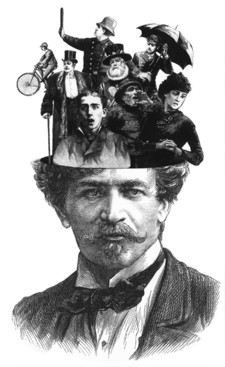 In 1991 I formed Empirical Tools and Technologies Corporation (ETNT) - also known as Empirical Tools and Toys. At ETNT I had a chance to code up some ideas I’d been thinking about for a few years. The result is a product called "Dr. Watson, the Network Detective’s Assistant". In my humble, and clearly unbiased opinion, it is the single most useful tool for the installation and troubleshooting of TCP/IP networks. You are welcome to download a copy.
In 1991 I formed Empirical Tools and Technologies Corporation (ETNT) - also known as Empirical Tools and Toys. At ETNT I had a chance to code up some ideas I’d been thinking about for a few years. The result is a product called "Dr. Watson, the Network Detective’s Assistant". In my humble, and clearly unbiased opinion, it is the single most useful tool for the installation and troubleshooting of TCP/IP networks. You are welcome to download a copy.ETNT died due to unfortunate circumstances outside of the company’s control; the internet lost a useful and valuable tool as a result.
-
In 1995 I was invited to be the principal software engineer (and the first paid employee) of what became Precept Software. Here I worked with Judy Estrin, Bill Carrico, Steve Casner, Chia-Chee Kuan, and many other amazing people. We designed and constructed the internet’s first high quality video distribution system - IP/TV. Through a process of acquisition we ended up as part of Cisco Systems. I worked on networking and multimedia for several years but I eventually moved into the Advanced Internet Architectures group in Cisco’s Office of the Chief Technical Officer (CTO) where I did research with the goal of making it easier and less expensive for us to run our networks.
-
-
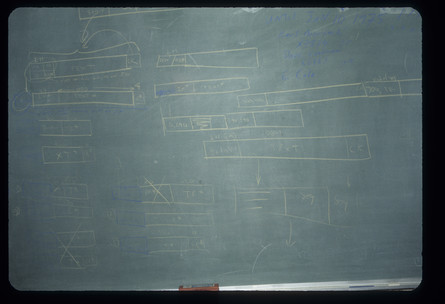 I’ve been associated with "the Internet" since the early days. To the right is a photograph taken on New Year’s Eve 1974 showing a black board containing some of the early ideas that eventually became TCP and IP.
This drawing was created by Vint Cerf and myself when we were considering how to add end-to-end security protections to TCP connections. We were working late at System Development Corporation (SDC) in Santa Monica. At the time TCP was a monolithic protocol. As can be seen from the drawing this was an early expression of the idea that a datagram (IP) layer should be split off from the underside of TCP. The protection mechanisms in the drawing foreshadow IPSEC.
I’ve been associated with "the Internet" since the early days. To the right is a photograph taken on New Year’s Eve 1974 showing a black board containing some of the early ideas that eventually became TCP and IP.
This drawing was created by Vint Cerf and myself when we were considering how to add end-to-end security protections to TCP connections. We were working late at System Development Corporation (SDC) in Santa Monica. At the time TCP was a monolithic protocol. As can be seen from the drawing this was an early expression of the idea that a datagram (IP) layer should be split off from the underside of TCP. The protection mechanisms in the drawing foreshadow IPSEC. -
I consider myself intimately versed in the Internet and its technology - I’ve been involved with the development of Internet technology for nearly three decades and have been active in the IETF for nearly a decade and a half. I’ve been involved with a fair number of standards and have done of implementations of everything from DNS to RTP/RTCP, from TRACEROUTE to MTRACE, and from RSVP to SNMP. (And many more - I won’t even mention the NetBIOS over TCP [RFC1001/RFC1002] diversion.)
-
Over the last decade I have increasingly come to believe that we need to evolve away from the pure end-to-end principle of the Internet and evolve to a mode in which end-to-end ideas are cross-checked against parallel systems with a more synoptic perspective. That’s a lot of high-sounding words to describe the simple concept of retaining the basic concepts of local autonomy and "dumb network" notions intrinsic in the end-to-end principle but adding to that the concept of area and global management mechanisms that make their more broad-based point of view available as advice to the distinct elements - the routers - of the Internet.
-
Despite appearances, I did receive an education at the hands of the public authorities. Rumor has it that I did graduate from University of California, Berkeley. I know the diploma is around here someplace.
-
And I also received my degree (JD cum laude) from Loyola (Los Angeles) in 1978 and passed the California Bar the same year.
-
As you’ve probably noticed, I’m particularly interested in the policy issues surrounding the Internet. I helped form the Boston Working Group (BWG). This website is filled with papers and ideas about internet governance.
-
I’ve been working with the show network at Interop ever since 1988. It’s an incredible opportunity to work with the not only the latest technology but also to work with an amazing crew of people whose talents never fail to amaze and whose friendship never fails.
-
I’ve been served up on an audio platter as a Geek of the Week, on KQED Forum, CNN Financial News, and elsewhere.
-
I’m not just involved in networking technology - For some years, I worked in Southern California on secure operating systems and secure networks. I had the honor to design and build the very first B level secure OS.
-
After a few years of wandering, romance, and marriage I ended up in San Francisco doing some really practical work keeping networks alive, day and night, for a rather large bank. This sort of thing really gives one a new perspective about what real network management is all about.
-
In 1995 I married Chris Wellens. One could not ask for a better friend or wife. She also has her own company - InterWorking Labs - http://www.iwl.com/
-
I eventually joined InterWorking Labs and became the Chief Technical Officer. I had an idea from my days at Precept Software - it was an idea derived from Jon Postel’s notion of a “flakeway” (in RFC1025). A flakeway is a middle-box that perturbs network traffic for the purpose of pushing code in the devices that are communicating through the flakeway into code paths that have not been well exercised. I extended Jon’s notion into a series of products named “Maxwell” (after James Clerk Maxwell’s thought experiment in which an intelligence intermediating between a hot box and a cold box tried to affect the second law of thermodynamics.). It seemed only natural that a device that intermediated between network devices, affecting the traffic between those devices, ought to be named after the originator of that experiment.
And now … drums roll… CaveBear.
Karl Tells All…
Yes, I am a lawyer. I graduated in 1978 from Loyola of Los Angeles with a J.D. (cum laude) and am an active member of the California State Bar. I have also been admitted to practice before the Federal Courts. Click here to see one of those expensive pieces of paper. Questionable Practices, Interests, and Beliefs
-
I believe that Punched Paper Tape is the medium of the future. (What other medium weighs less the more data you put on it?) OK, you win, punched cards.
-
I believe that the Internet should be governed by individuals, not by corporations. I believe that domain name holders deserve to hold and use their names in peace and, except in cases of actual infringement, not be harassed by those who hold trademarks. Are these radical thoughts? They seem to be.
-
I strongly believe that SNMP is not network management. SNMP is a useful access method, but it certainly shouldn’t be confused with "the real thing." Take a look at Towards Useful Network Management and delegation protocols.
-
Interop – I’ve spent an enormous amount of time designing, building, operating, troubleshooting, and dismantling the various show networks for the Interop trade shows. It’s a lot of work, but it is a nice way to work with good, smart people and get down-and-dirty with interesting technologies. In the recent years, the show has changed so that vendors vend - with enormous amounts of hype - and the original goal of doing interoperability testing between vendors has tended to occur only in the so called "Interop Labs" or "iLabs".
-
I’ve worked in the iLabs for several years doing everything from entertainment grade video to penetrating VoIP security.
-
Steam Locomotives are way cool. I occasionally help out restoring Southern Pacific 2479 – a 1923 mainline locomotive. I’ve also been seen (not recently) laying track out in Niles Canyon. Click here for a photo of me and some real "hardware".
And if you remember the doubleheader with the SP 2472 and SP 4449, then the following might be of interest. All of these were taken one morning near Aromas, California:-
SP 2472 and SP 4449:
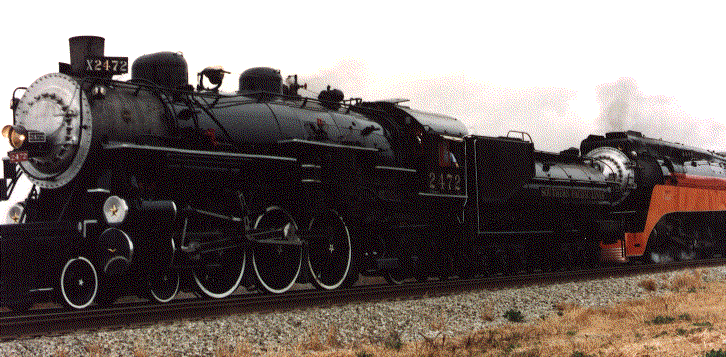
-
SP 2472 and SP 4449 at speed with lots of steam:
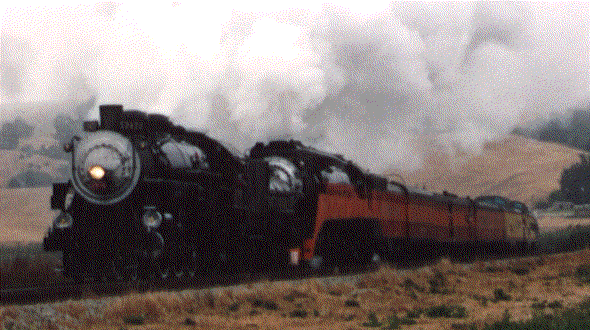
-
SP 2472 stopped and close:
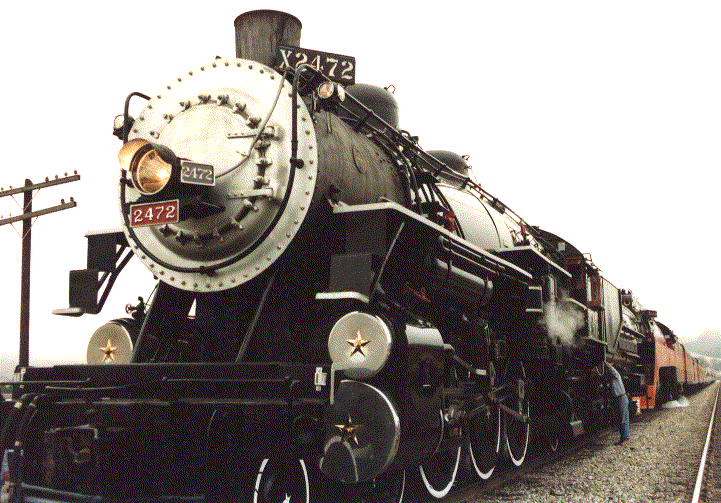
-
-
You might want to visit The California Trolley and Railroad Corporation.
-
Much of my life is spent in dark rooms. Voluntarily! I spent several years working with TheatreWorks, a Palo Alto based theatre company. You should come see one of the shows! Click here to see a photograph me and the rest of the folks for a show we did at Christmas 1993.
-
I am now engaged in making The History of the Internet Project which is a video documentary series based on first person and primary source materials.
By-the-way, I make horrible puns.